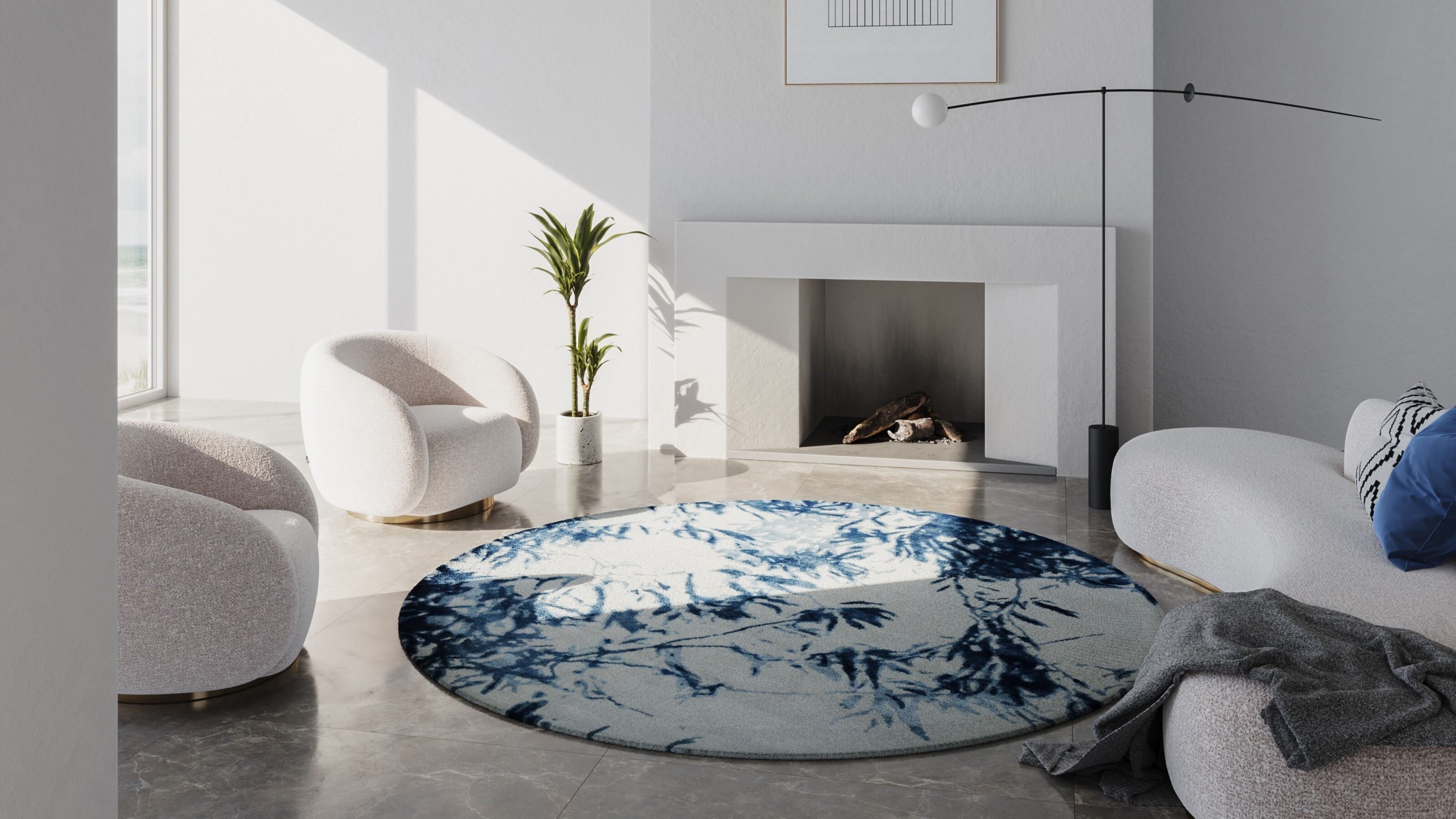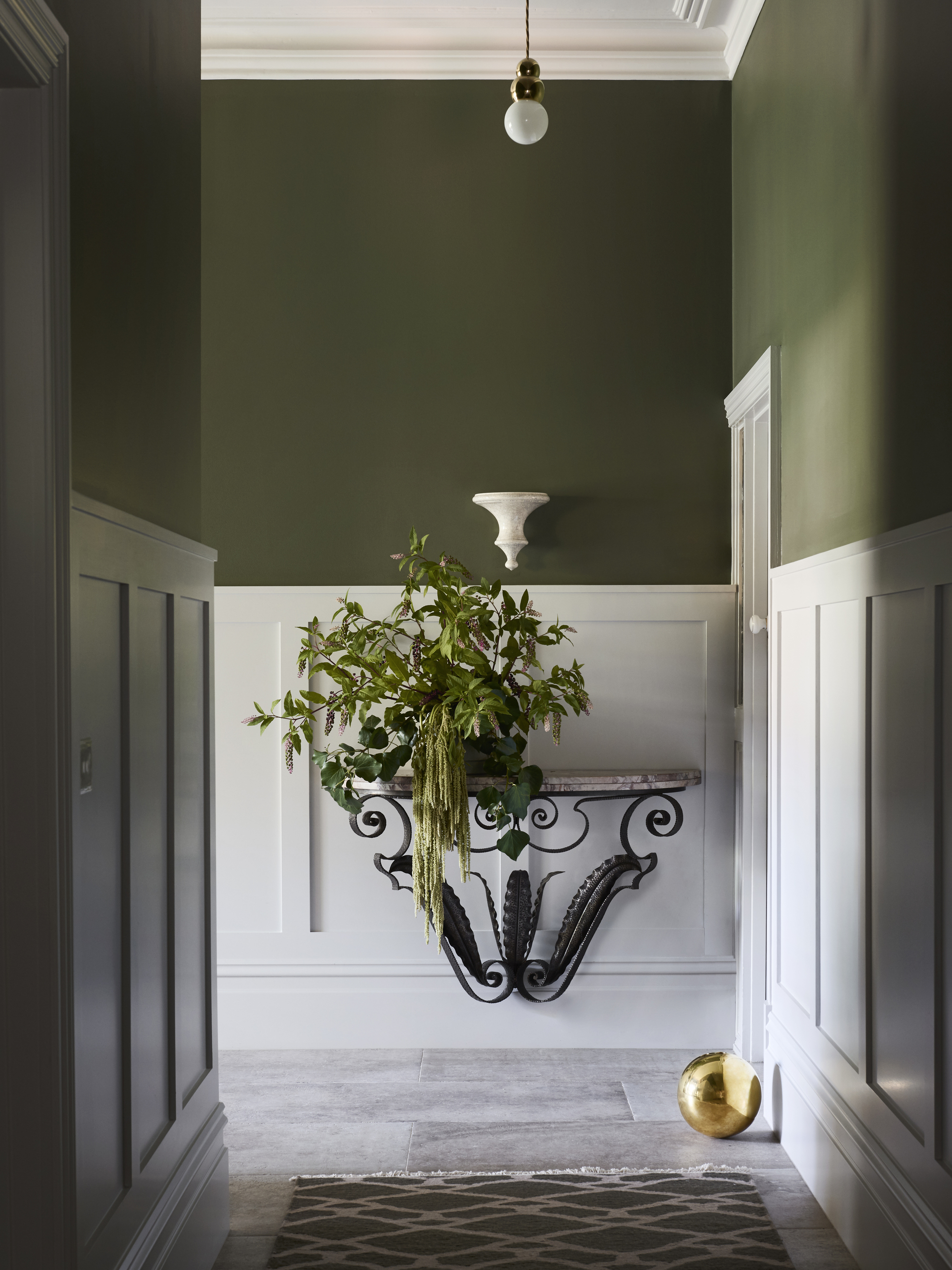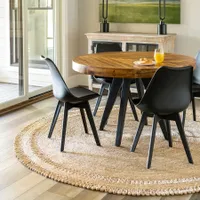'They're not for every room' – designers say they'll never use a round rug in these 5 spaces, and neither should you
How do I know when not to use a round rug? What to look out for to make sure you're using the perfect shape floor covering every time


A round rug can make for a clever design tool that can bring gentle curves and softness to a space, and set the stage for a statement piece of curved furniture. Round rugs can help bring a sense of intimacy and can make sense of an odd-shaped room or architectural element.
'We have found that round rugs are increasingly popular with our clients recently, whether it’s for a dining room, living room or, more frequently, to define the space in a lobby area,' says rug designer, Tania Jonson of Tania Johnson Design. 'In these spaces, round rugs can add color, texture, and warmth to an otherwise fairly minimal space.'
They have long been popular in the world of interiors, but even the best round rugs aren't right for every room in the home. In certain situations, the architecture and flow of a room will demand something longer, angular, or narrow. I've spoken to the interior designers to find out just how to avoid these situations to make sure you don't misplace a round rug in your home.
1. In a long and narrow living room
Wondering what a round rug does to a room? Generally, they add softness and curves, but in a long, narrow room, a round rug can make a space feel disjointed. Think about the shape of your room and make sure your rug mirrors this shape. 'The shape of rug you should choose is all dependent on your room shape', says Caroline Cockerham, founder of sustainable rug brand, CICIL. A round rug in a long and narrow-shaped room will only break the space up and add to the feeling of length, only emphasizing the length of the room and making it feel like an echo chamber rather than one cohesive space. Instead, a long and rectangular space requires a rectangular rug to echo the surrounding walls.
If you are set on using round rugs, consider layering a group of larger area round rugs, placed along the length of the room to make sure the furthest two walls of the room still feel connected. If you are looking for one large area rug, go for a larger oval-shaped rug which will still give you those curves that you want from a round rug, but with the added length.
2. Under a rectangular dining room table

Similar to how you want your rug to mimic the walls around you, you also want the furniture within the space to mimic the rug shape. For this reason, a round rug won't work under a rectangular dining table. Instead, you are best choosing a shape that mimics the form of the table. 'Typically a circular rug won't work under a rectangular table,' says Caroline. A round rug does, however, work under a round dining table, because it mimics the shape in a harmonious way.
If you are dealing with a rectangular dining table, you can use a rectangular rug or oval or pill-shaped rug instead, bringing softer curves while still reflecting and mirroring the larger piece of furniture on top.
Whether you've gone round or rectangular rug shape, you need to be wary of sizing and space. 'Make sure there is enough space so all the legs and chairs can comfortably sit on the rug,' adds Caroline. 'If it's under a round dining table and chairs, the rug should extend at least 24" beyond the table, leaving yourself enough room to pull a chair out and still be on the rug,' says Megan Unger, founder of Orange County design studio, Megan Robertsons Designs. 'If it's a living room rug, the furniture layout should either have all legs on the rug or all front legs on the rug.'
The Livingetc newsletters are your inside source for what’s shaping interiors now - and what’s next. Discover trend forecasts, smart style ideas, and curated shopping inspiration that brings design to life. Subscribe today and stay ahead of the curve.
Hand-braided jute round rug, Rugs.com
A round rug is a great addition under a round dining room table, and I love jute rugs as a durable choice that calls to nature.
3. If the rug is too small for the room
Think about the relationship between the rug and the shape of the room. A large room will need a large area rug, and a large square room won't look fully complete with a small round rug which will leave too much of your flooring exposed.
'If you have a small living room, I advise against using a round rug in the space as you will lose a lot of valuable floor space in the corners,' says Charu Gandhi, founder and director of Elicyon. 'Large round rugs can also be great for larger spaces, especially if you have a playful and sculptural furniture arrangement with organic shaped seating. However, if you are zoning or creating a more formal area, we would usually advise a square or rectangular rug.'
4. In a narrow entryway

For the same reason that a long, narrow living room doesn't suit a round rug, a narrow entryway also isn't the best for a small round rug. This can feel out of place and doesn't work to lead your guest's eye down the hallway and into the heart of your home. Instead, a round rug will look randomly placed without any real thought or consideration. 'A round hallway runner would simply not work, says Richard Misso, director at The Stylesmiths. Consider instead a runner that sits away from the walls and guides visitors along the hallway.
Having said that, a larger hallway or foyer area that is more square shape might be more suited to a larger, round rug, so take the dimensions of your entryway - anything between 30 and 40 inches wide might be too narrow for a round rug to comfortably work, but a square entryway with space in the center could host a round rug with a round coffee table placed on top, perhaps finished with a bunch of flowers to welcome you into the home.
5. Under an L-shape sofa
Finally, look at the shape of your living room sofa. A round rug must mirror the furniture, so anything with harsh edges won't work next to the curves of a round rug.
The number one rule for round rugs is to make sure that the shape of the rug mirrors the shape of the furniture,' says Irene Gunter, co-founder at Gunter & Co. 'For instance, a round rug is an excellent option under a round table, while a large oval rug is suitable for seating arrangements that feature a curved sofa opposite an armchair,' she says. 'It is best to avoid using a round rug under a corner or a rectangular sofa. The circular shape of the rug can clash with the angular lines of the sofa, creating an awkward and unbalanced look.'
When should you use a round rug?

Consider when a round rug might be the perfect option for the space. If a round rug works best when echoing curves and other round furniture in the room, use a round rug under a curved sofa instead of an L-shape, or round vs rectangular dining table.
A small round rug also doesn't work in a space that is too large, so consider opting for a round rug in a smaller space where you're looking to create a cozy feel.
'I really like to listen to the architecture of a house,' recommends Melinda Trembley, creative director of boutique design studio, Rincon Road. 'But if there is an interesting architectural layout like a bay window or any curves or even a circular detail on the ceiling, a round rug might be a nice compliment.'
One common mistake is choosing a rug first and then designing around it. This approach can limit your options and make it harder to achieve a cohesive look. 'Instead, it's better to visualize the rug as a picture frame around your furniture layout,' says Irene.
'First, select your furniture, and then choose a rug that complements it. This way, the rug will provide a visual boundary and create a focal point for the room. Additionally, it will help tie together the different elements in the space.'

Former content editor at Livingetc.com, Oonagh is an expert at spotting the interior trends that are making waves in the design world. She has written a mix of everything from home tours to news, long-form features to design idea pieces, as well as having frequently been featured in the monthly print magazine. She is the go-to for design advice in the home. Previously, she worked on a London property title, producing long-read interiors features, style pages and conducting interviews with a range of famous faces from the UK interiors scene, from Kit Kemp to Robert Kime. In doing so, she has developed a keen interest in London's historical architecture and the city's distinct tastemakers paving the way in the world of interiors.
